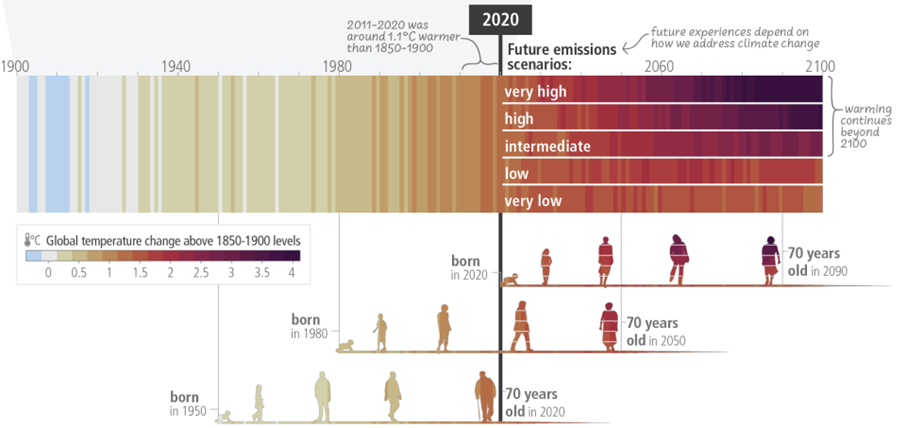Human development: are we back-sliding?
Recently the United Nation Development Program launched this year’s Human Development Report. HDR and its index Human Development Index (which measures human development by looking at economic factors as well as life expectancy, health, education) has now been around for some impressive 32 years. We have gotten used to the HDR confirming a steady process of improvements, but this year is the first time that the HDI declined a second year in a row. We live in a time of worries and uncertainty. An “uncertainty complex”, argues the HDR (with data to support it). Our worries can, according to the HDR, be traced to three interacting causes: the destabilizing planetary pressures and inequalities of the Anthropocene, the pursuit of sweeping societal transformations to ease those pressures as well as widespread and intensifying polarization.
The world has, as Hans Rosling reminded us, certainly gotten a lot better in many, if not most, aspects during the last 20, 30 or 100 years. But the human development report is a reminder that we can’t take progress in human development for granted. At the same time the report shows us that there is also a way forward; things we can do to reverse the negative trend and continue to build on the trajectory of continued human development.
All is not well, but all is not lost, either. Policies that focus on the Three I’s—investment, insurance and innovation—will go a long way in helping people navigate the new uncertainty complex and thrive in the face of it (HDR, p 17)
The complexity of investing
How you invest capital, as an individual or as a company, has consequences. By avoiding certain companies or sectors, it is often argued, we make it easier for more sustainable businesses and sectors to access capital and, hence, grow. This certainly has some truth to it, and avoiding some companies can also be part of a moral stand, but divesting is not necessarily always the most efficient way of reducing for example CO2. For those who have the means, being an active owner may allow you to tweak the business model of some companies, which in turn can make a huge difference. In a recent opinion piece in Dagens Nyheter, one of the dominant Swedish pension funds, AP7, argued:
The international capital market is dominated by traditional capital management without significant climate ambitions. What is missing are sustainable investors who are prepared to roll up their sleeves and get involved as owners. (Gröttheim and Florén, AP7)
So where does this leave those of us who are aware that our savings can make a huge difference, but don’t do investments for a living? Well, a good start is to find out more about the companies you invest in – or do business with – as well the strategy of your asset manager. Your choices make a difference (there is plenty of information available on the web and I have recently referred to BlackRock in a couple of newsletters. See also how some Swedish investors approach this)
Purpose: is sustainability becoming politicized?
In the US and to a certain extent also in Europe, the debate on Environment, Social and Governance (ESG) in business is heating up. Elon Musk’s tweet “ESG is scam” put light on the one aspect of the debate (to what extent ESG should only be about the environment -see also last month’s Newsletter on climate vs other aspects of sustainability). But the debate is broader than that where critics, including politicians, argue that ESG is a leftist ideological pursuit (read more e.g. here).
To me, the sustainability agenda (of which ESG is an instrument), definitely has ideological connotations – and implications. But it isn’t particularly “leftist”, just like fundamental human rights shouldn’t be described as “leftist”. It has in my view rather been fairly mainstream, something most politicians can agree on, at least in principle. However, as the conservative/nationalistic and far right movement is gaining support, policies that were previously not contested have become dividers. Even if ESG originally was a tool for investors to identify and assess risks of an environmental, social and governance character, it now seems to have become associated with much more than that. Fact remains, however, that companies uninterested in these issues put themselves (and their stakeholders) at great risk.
I understand that all the talk about new ways of doing business, stakeholder capitalism, and combining profit with purpose (read more in previous Newsletters) can be perceived as a threat to those who believe that status que serves them well. But, as the Human Development Report referred to earlier shows, we need to change trajectory and to speed up the transition towards more sustainable ways of running our businesses and our societies. The era of fossil fuel and competition based sub-living wages is not the future. We need a system that is fairer to future generations as well as to hard working people that can’t make ends meet.
Not everyone, or every company, can (or should?) go as far as Patagonia in their sustainability endeavors but for me it is hard not to get inspired by a company that has decided to not only to be as sustainable as they can in their production and in their operations, but also to redistribute the profits – and ultimately the ownership of the company – to a trust “fighting the environmental crises and defending nature.” (read more about Patagonia’s decision here)
Agreeing that the current trajectory isn’t sustainable and that business can be a force for good doesn’t mean that we have to agree on how change will happen. But those companies and organizations that manage to agree on these basics will, I think, be in a better position to manage competition and change. They will have a “super power” in that they have a purpose, some values on which they agree and that makes employees and owners proud.
IKEAs approach to social sustainability and the development of tools for circular business models
It is often easier to talk about things that ought to be done, than actually doing them, or showing how they can be done. I regularly help companies transform sustainability visions into plans and actions and I, almost on a daily basis, meet individuals or organizations that come up with new innovative ways of addressing sustainability challenges that they are facing. Two examples that have inspired me the last few weeks:
- Cradlenet and Steena Circular Consulting recently produced a report named Product-as-a-Service in the circular economy: the nine critical challenges and how to fix them. The challenges are divided into three categories (customer acceptance, operational and capability related costs and finally financial risk) and followed by concrete advice for companies who want to work with PaaS. My experience is that few method documents are instant game changers, but I have no doubt that our economies will become more circular, and then this kind of methods development will be useful. The report can be downloaded free of charge e.g. here.
- IKEA recently amended their sustainability strategy. The update relates to how IKEA, through its business, wants to reduce inequalities and strengthen human rights. The strategy recognizes IKEA’s opportunity – and responsibility – to work with others to build resilience in societies and make equal opportunities available for all (read more about the new strategy here)
Our business is built by people. To thrive as an organisation, we must ensure the well-being of people, leaving no one behind. (p 16)
Having a good strategy – and a commitment – is a great start, though it isn’t enough. When reading their sustainability report, however, I get reminded that change is happening. With strong values and a strong culture that support your sustainability aspirations, you are likely to reduce the risk of strategies remaining strategies.
Without any deeper knowledge, I can’t help but think that one of the challenges Ericsson has faced in implementing their sustainability aspirations, relates to a culture not shared by everyone in the company. Luckily, that can change.
In my experience a lot of the change that needs to happen and a lot of the change that is happening now, derives from the private sector rather than from the government. So, for those looking for inspiration, a good start may be the companies who are at the forefront in your line of business!


 company, both in terms of profits and in terms of the value it creates for its different stakeholders. The success can be measured by an increased score on the company’s
company, both in terms of profits and in terms of the value it creates for its different stakeholders. The success can be measured by an increased score on the company’s  Late January I made a presentation at a Round Table at the Swedish Embassy in Pretoria. The Round Table was about challenges and opportunities with regard to a “Just Green Transition”, and more specifically how Sweden and climate smart products developed by Swedish companies, can contribute to a greener and more just future. During the Round Table we spent some time talking about the development in Europe regarding increased regulation around sustainability disclosures (e.g. the Taxonomy, CSRD and the coming Corporate Sustainability Due Diligence Directive). Not everyone was convinced about the greatness of disclosure, and I personally agree that regulation on disclosure will not be enough.
Late January I made a presentation at a Round Table at the Swedish Embassy in Pretoria. The Round Table was about challenges and opportunities with regard to a “Just Green Transition”, and more specifically how Sweden and climate smart products developed by Swedish companies, can contribute to a greener and more just future. During the Round Table we spent some time talking about the development in Europe regarding increased regulation around sustainability disclosures (e.g. the Taxonomy, CSRD and the coming Corporate Sustainability Due Diligence Directive). Not everyone was convinced about the greatness of disclosure, and I personally agree that regulation on disclosure will not be enough.